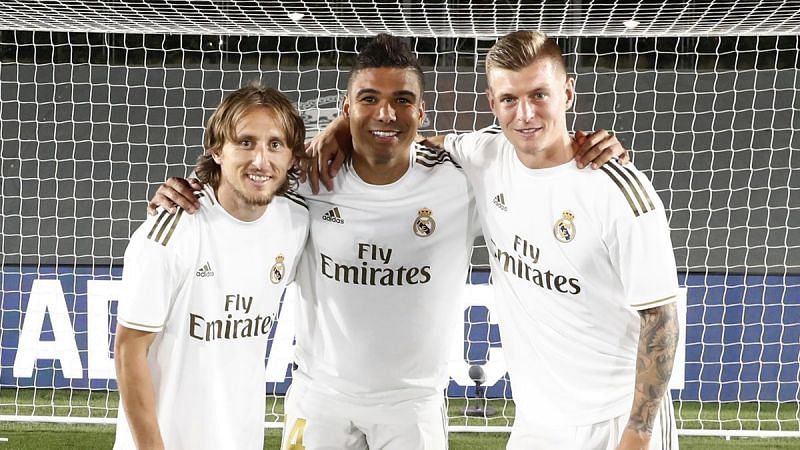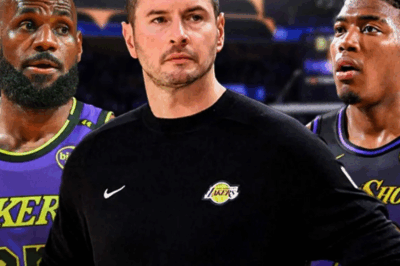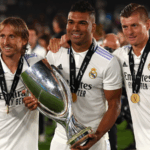Who’s Stopping This Midfield Trio at the World Cup? An In-Depth Analysis of Football’s Most Dominant Midfield Units
The FIFA World Cup is the pinnacle of international football, showcasing the best talent from around the globe.
As fans and analysts eagerly anticipate the tournament, one of the most talked-about aspects is the midfield — the engine room of any successful team.
In recent years, certain midfield trios have emerged as dominant forces, dictating the pace, controlling possession, and orchestrating attacks with precision.
But the question remains: Who can stop these formidable midfield units at the World Cup?
In this comprehensive analysis, we delve into the most influential midfield trios in the tournament, examining their strengths, tactical setups, key players, and the challenges they face from opponents.
From the tactical brilliance of European giants to emerging talents from other continents, this article explores the battle for midfield supremacy that could determine the fate of the 2026 World Cup.
The Significance of the Midfield in Modern Football

Before analyzing specific midfield trios, it’s essential to understand why the midfield is often considered the heart of the team. In modern football, the midfield serves multiple roles:
Control and Possession: Midfielders dictate the tempo of the game, maintaining possession and dictating the rhythm.
Defense and Transition: They act as the first line of defense and facilitate quick transitions from defense to attack.
Creativity and Goal-Scoring: Creative midfielders unlock defenses with precise passes, while some also contribute goals.
Tactical Flexibility: The midfield’s structure often determines a team’s tactical approach, whether it’s possession-based, counter-attacking, or a balanced system.
Given these multifaceted responsibilities, a dominant midfield trio can elevate a team’s chances of lifting the World Cup trophy.
Leading Midfield Trios in the 2026 World Cup
Spain’s “La Roja” Midfield: Pedri, Gavi, and Rodri
Overview:
Spain has long been renowned for its technically gifted midfielders, and the 2026 World Cup is no different. The current trio of Pedri, Gavi, and Rodri represents a blend of youthful exuberance and seasoned control.
Pedri:
The Barcelona starlet has been hailed for his vision, dribbling, and intelligence on the ball. At just 21, Pedri’s ability to find pockets of space and create scoring opportunities makes him a key figure in Spain’s midfield.
Gavi:
Another Barcelona product, Gavi is known for his relentless energy, pressing, and tactical discipline. His versatility allows him to operate both centrally and on the flanks, providing Spain with dynamism.
Rodri:
Manchester City’s anchorman offers stability and defensive solidity. His exceptional positioning, interception skills, and long-range passing enable Spain to control the game from deep.
Strengths:
Technical proficiency and quick passing
High pressing intensity
Tactical intelligence and adaptability
Challenges:
Physicality against more robust opponents
Maintaining consistency in high-pressure matches
Potential Threats from Opponents:
Teams like Germany or Brazil might exploit physical duels or press high to disrupt Spain’s rhythm.
Brazil’s “Samba” Midfield: Casemiro, Bruno Guimarães, and Paquetá

Overview:
Brazil’s midfield is a blend of resilience, creativity, and flair. The trio of Casemiro, Bruno Guimarães, and Lucas Paquetá combines defensive grit with attacking ingenuity.
Casemiro:
The veteran Real Madrid midfielder is a defensive titan, known for his exceptional tackling, aerial ability, and leadership. His experience in big tournaments makes him indispensable.
Bruno Guimarães:
A rising star from Newcastle United, Bruno offers box-to-box energy, technical skill, and the ability to drive attacks from midfield.
Paquetá:
Lyon’s attacking midfielder brings flair, dribbling, and goal-scoring threat, adding creativity to Brazil’s engine room.
Strengths:
Defensive resilience and intercepting ability
Creativity and attacking support from deep
Experience in high-stakes matches
Challenges:
Balancing attack and defense
Over-reliance on Casemiro’s defensive contributions
Potential Threats from Opponents:
Teams like Argentina or France could target the Brazilian midfield with quick transitions and pressing to unsettle their rhythm.
France’s “Les Bleus” Midfield: Kanté, Tchouaméni, and Rabiot
Overview:
France’s midfield is a mix of tenacity, youth, and versatility. The combination of N’Golo Kanté, Aurélien Tchouaméni, and Adrien Rabiot offers a balanced approach.
N’Golo Kanté:
Renowned for his relentless work rate, Kanté’s ability to break up play and cover vast areas of the pitch makes him a vital cog.
Tchouaméni:
The Monaco midfielder is a dynamic presence, combining physicality with technical skill, and is capable of both defending and initiating attacks.
Rabiot:
Rabiot’s composure, passing range, and ability to contribute offensively add depth to France’s midfield.
Strengths:
Defensive solidity and ball recovery
Flexibility in tactical setups
Ability to transition quickly from defense to attack
Challenges:
Maintaining discipline against quick, skillful opponents
Ensuring creative output without sacrificing defensive duties
Potential Threats from Opponents:
Against teams like England or Spain, France’s midfield might be tested by high pressing and quick passing.
Germany’s “Die Mannschaft” Midfield: Kroos, Gundogan, and Havertz

Overview:
Germany’s midfield combines experience, technical skill, and versatility. The trio of Toni Kroos, Ilkay Gündogan, and Kai Havertz provides a mix of control and attacking threat.
Toni Kroos:
A master of ball distribution, Kroos’s precise passing and vision make him the backbone of Germany’s midfield.
Gündogan:
The Manchester City captain offers leadership, intelligence, and goal-scoring ability from midfield.
Havertz:
A flexible attacker-midfielder, Havertz’s creativity and ability to link play are vital for Germany’s attacking setups.
Strengths:
Superior passing and possession retention
Tactical intelligence and experience
Goal-scoring from midfield
Challenges:
Age and physicality concerns
Transitioning quickly against energetic opponents
Potential Threats from Opponents:
Teams like Spain or France may press high to disrupt Kroos’s distribution and Gündogan’s rhythm.
Can These Midfield Trios Be Stopped? Analyzing the Tactical Battles
The question of who can stop these dominant midfield units is complex. It depends heavily on tactical setups, individual performances, and in-game adjustments. Here are some key strategies opponents might employ:
High Pressing and Disruption
Teams like Argentina, Netherlands, or Senegal might deploy intense pressing to force turnovers in midfield. Disrupting the rhythm of these trios can lead to mistakes and counterattack opportunities.
Physicality and Aggression
Physical teams can challenge technically gifted midfielders with aggressive marking, especially in set-piece situations or duels in tight spaces.
Tactical Fouling and Frustration
Strategic fouling and tactical fouls can break the flow of possession, forcing the opposition to reset and lose momentum.
Exploiting Weaknesses
Every midfield has vulnerabilities. For instance, younger or less experienced players might be targeted with quick transitions or pressing high up the pitch.
The Role of Coaches and Tactical Flexibility
Coaches play a crucial role in neutralizing or leveraging these midfield units. Some key tactics include:
Double Marking: Assigning two players to shadow a key midfielder, limiting their influence.
Switching Formations: Adapting formations mid-game to exploit weaknesses or reinforce midfield stability.
Counter-Attacking Football: Using quick transitions to catch advanced midfielders out of position.
Successful teams will need to combine tactical discipline, individual brilliance, and strategic adaptability to challenge these midfield giants.
Conclusion: The Battle for Midfield Supremacy at the World Cup
As the 2026 World Cup approaches, the battle for midfield dominance promises to be a defining aspect of the tournament.
The most talented and tactically astute teams will seek to neutralize these formidable trios, while their own midfield units will aim to impose control and dictate the tempo.
Whether it’s Spain’s technical mastery, Brazil’s resilience and flair, France’s versatility, or Germany’s experience, each trio represents a different style of excellence.
The teams that succeed will be those that harness tactical ingenuity, individual brilliance, and collective discipline.
In the end, the question remains: Who’s stopping this midfield trio? The answer will be revealed on the grand stage of the World Cup, where legends are made, and football history is written.
News
Queen Latifah Shines at the 2025 Oscars Ceremony with Her Wife Eboni Nichols: A Celebratory Night of Glamour and Love
Queen Latifah Shines at the 2025 Oscars Ceremony with Her Wife Eboni Nichols: A Celebratory Night of Glamour and Love…
The Crucial Decision Facing JJ Redick: Rui Hachimura or Marcus Smart as the Starting Guard When LeBron James Returns
The Crucial Decision Facing JJ Redick: Rui Hachimura or Marcus Smart as the Starting Guard When LeBron James Returns As…
Breaking News: Renowned Actor Liev Schreiber Hospitalized in New York – What We Know So Far
Breaking News: Renowned Actor Liev Schreiber Hospitalized in New York – What We Know So Far In a surprising development…
Detroit Pistons Achieve Historic 10-Game Winning Streak for the First Time Since 2008, Cementing Their Dominance at the Top of the Eastern Conference
Detroit Pistons Achieve Historic 10-Game Winning Streak for the First Time Since 2008, Cementing Their Dominance at the Top of…
Eric Jerome Dickey’s ‘Friends and Lovers’ Transforms into an Exciting New Television Series: A Deep Dive into the Adaptation and Its Cultural Significance
Eric Jerome Dickey’s ‘Friends and Lovers’ Transforms into an Exciting New Television Series: A Deep Dive into the Adaptation and…
Michael Porter Jr. Dominates Stat Sheet to Lead Brooklyn Nets to Second Victory of the Season
Michael Porter Jr. Dominates Stat Sheet to Lead Brooklyn Nets to Second Victory of the Season In an electrifying display…
End of content
No more pages to load












